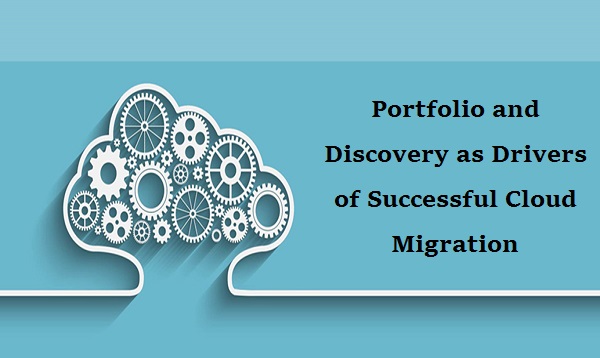In the entire gamut of moves that are necessary for digital transformation of the organization, cloud adoption can perhaps be the most vital step to be taken. This is the most significant and complex move, which is full of challenges and roadblocks unless it is backed by prudent planning and a structured approach.
Importance of a Planned Cloud Migration
In the absence of proper planning, the cloud adoption process can impact the organization in terms of incremental costs, and inordinate delays in addition to the failure of achieving much anticipated success at the end of the day.
The right and structured cloud migration must go through the five most important stages that must begin with a through a clear understanding of business planning and in-depth preparation for migration. The second step forms the very crux of cloud migration and is an extremely important aspect of a successful cloud adoption. It involves identification and planning of portfolio and delivers data to update every component that may be part of the process from beginning to the end.
The subsequent phases include migration of onsite applications to cloud and validation, followed by smooth running of cloud operations.
We will be focusing our attention on the second phase of a cloud migration process because unless the application or asset dependencies are clearly understood, one cannot plan migration to cloud with help of building a case for a business that is driven by data.
Clear understanding of portfolio discovery is an essential prerequisite to determine the best possible way to embrace the cloud. Portfolio discovery delivers the optimum efficiency without impacting seamless infrastructure operations at the level of applications.
Power of Knowledge in Cloud Migration
The second phase of cloud adoption offers valuable insights about operating the application in the most optimized manner. This knowledge is essential for designing a flawless migration plan that addresses the business case by focusing on data assets.
The proposed migration plan can thus deliver the highest efficiency because it takes into account every application and portfolio.
Clear knowledge of application is required to develop a migration plan that focuses on priorities as far as applications are concerned. The second phase can be explained by understanding the processes of discovery and planning.
In the discovery part, dependencies and assets are mapped after precise discovery. In this process, one can also appreciate correlation of assets and dependencies in view of business services that are being supported. Planning provides opportunity to gather information in terms of costs so that a proper migration plan can be designed for a better performance at lower costs.
Great Benefits of Discovery
Many enterprises lack the ability of discovering the assets and capabilities from the contest of their businesses. It is not very difficult to list down almost every asset but majority of companies find it hard to associate these assets with reference to business services.
This can be further complicated due to the technological changes that are commonplace in modern digital infrastructures. In order to simplify the discovery process, one should gather comprehensive inventory of all resources including servers, storage, applications, software, and network components to name a few.
Dependencies must be mapped properly and documented thoroughly across the entire infrastructure of organization. This process should take into account load balancing, relationships between servers, hosts and edge networks, and complex deployments such as hybrid clouds.
The knowledge gathered by these processes is a valuable raw material to build a consistent and reliable framework to analyze and evaluate every single workload as well as application with respect to its feasibility for cloud migration.
You will be able to gain a more meaningful insight to help arrive at informed decisions and choices. The plethora of options to choose from can include retiring an application or device, re-hosting of a software, or using a PaaS service for building it again.
How to Ensure a Smoother Cloud Migration
A quick identification of applications that are the right candidates for cloud migration is necessary to avoid analysis of all applications irrespective of their cloud-worthiness. There are four major categories of applications including location specific, virtualized, cloud-friendly, and SaaS like applications that are built for cloud only.
Process of cloud migration must begin by bucketing of applications according to their individual characteristics and features.
It is hardly any wonder that some enterprises are moving all their digital assets and applications to cloud, obviously due to greater cost efficiency of cloud services. However, this may not be the right way to embrace cloud as there is always a lurking danger of failure.
Therefore a more prudent and practical solution would be to drive cloud adoption by selecting small projects and then going ahead by learning from the past experiences.
In summary
Cloud migration process should focus at reducing the time to value by maintaining a consistent pace of migration. Portfolio identification and its discovery can guarantee a successful migration.






 Live Chat
Live Chat